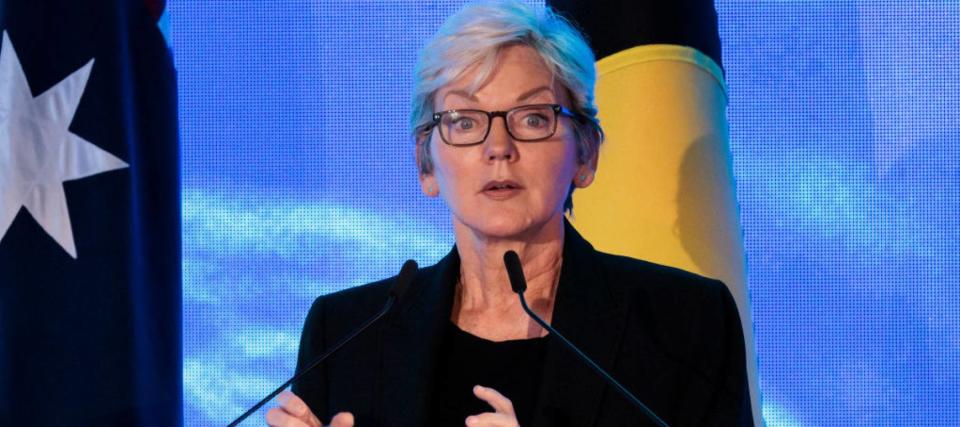US Energy Secretary Jennifer Granholm went on an American road trip to promote the benefits of EVs — but it went horribly wrong. Here's what happened and why it's still too common

Government officials are just like us: they get into awkward electric vehicle (EV) charging situations.
Here’s what happened: According to NPR, in an effort to show Americans the benefits of EVs, Secretary of Energy Jennifer Granholm and her team were taking a four-day road trip from Charlotte, N.C. to Memphis, Tenn.
Don't miss
Rich young Americans have lost confidence in the stock market — and are betting on these 3 assets instead. Get in now for strong long-term tailwinds
Worried about the economy? Here are the best shock-proof assets for your portfolio. (They’re all outside of the stock market.)
Thanks to Jeff Bezos, you can now use $100 to cash in on prime real estate — without the headache of being a landlord. Here's how
In a suburb of Augusta, Ga., however, Granholm’s team ran into a common hiccup for EV drivers: there simply aren’t enough chargers to service all the vehicles on the road. When the first wave of the fleet arrived at a local charging station, they discovered that one charger was broken and the others were occupied. When a working charger opened up, a staffer parked a gas car there to save the spot for Granholm.
But when a family with a newborn in the car arrived and saw Granholm’s staff in a gas car blocking the last EV charger, they called the cops.
Fortunately, they were able to resolve the situation and Granholm and the family were both able to charge their EVs. But this trip does highlight some of the issues with EVs. Here’s how to figure out if they’re right for you.
The not-so-great factors
If you’re going on a road trip like Granholm’s, you won’t be able to get through it on a one-time charge. EVs only last about 110 to 300 miles on a single charge, according to the Department of Energy.
And even though Granholm’s team had planned ahead, there’s no guarantee even if you have chargers mapped out along your route that you’ll get access to one — whether because they’re full or out of service. Unless you only drive small distances and can charge at home, EVs may prohibit your range.
Another issue is that the fastest EV charger on the market takes 20 minutes — and not all EVs are built to handle that speed, according to the Department of Transportation. Furthermore, not all charging stations offer the fast-charging option, which is why Granholm’s team was so protective of that particular charging spot.
While it may seem like every corner in America has a gas station, in comparison, EV chargers are a hot commodity. There are only 130,000 public chargers in the U.S., according to a recent Biden-Harris administration estimate.
While the Biden-Harris administration plans to increase the amount of chargers to 500,000 by 2030, drivers now are still risking running low on the road or having to resort to calling the cops to get someone to hand over the one, precious EV charger nearby.
Read more: How can I stop the pain and make money in this nightmarish market? Here's 1 simple way you can protect your nest egg
… and the good
Despite the drawbacks of EVs, the cars can be a good investment.
Consumer Reports discovered that EV owners can save up to $1,000 on gas per year. This isn’t always the case, but with gas prices having increased by 10.6% in August’s Consumer Price Index, it may be nice to be free of the fuel fluctuations.
And keep in mind that the government is handing out incentives to buy EVs. With certain qualifications, you can receive a tax credit up to $7,500 after you purchase a brand new EV.
There’s also the argument that EVs may serve to help uplift the economy. The Biden-Harris administration announced this past February that all EV chargers must be built in the U.S. Because of mandates like these, the Inflation Reduction Act is expected to add 1.5 million jobs to the economy, according to a Labor Energy Partnership analysis. More jobs means more spending and a stronger economy — for everyone.
What to read next
The US dollar has lost 98% of its purchasing power since 1971 — invest in this stable asset before you lose your retirement fund
Jeff Bezos and Oprah Winfrey invest in this asset to keep their wealth safe — you may want to do the same in 2023
Commercial real estate has outperformed the S&P 500 over 25 years. Here's how to diversify your portfolio without the headache of being a landlord
This article provides information only and should not be construed as advice. It is provided without warranty of any kind.

 Yahoo Finance
Yahoo Finance 